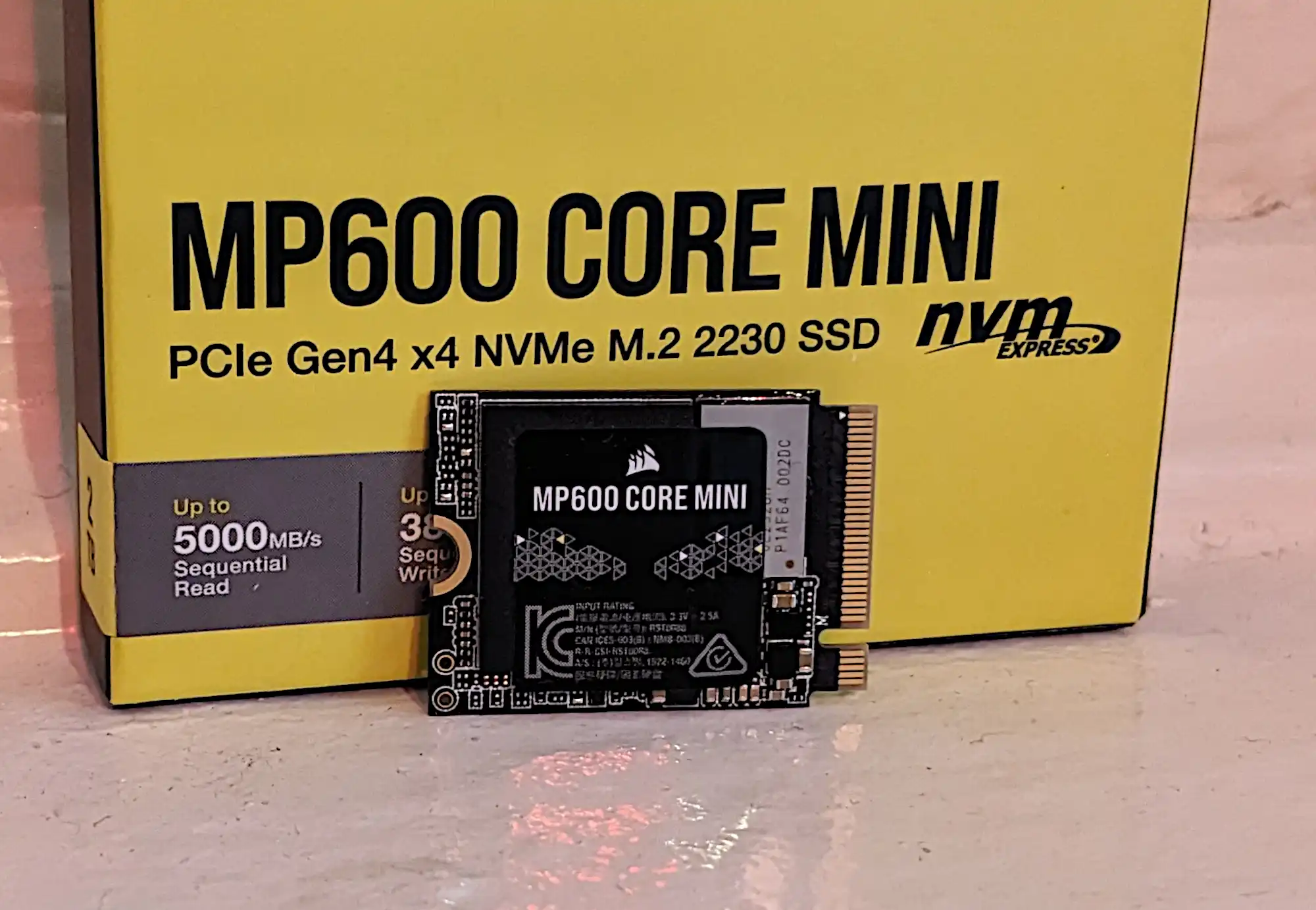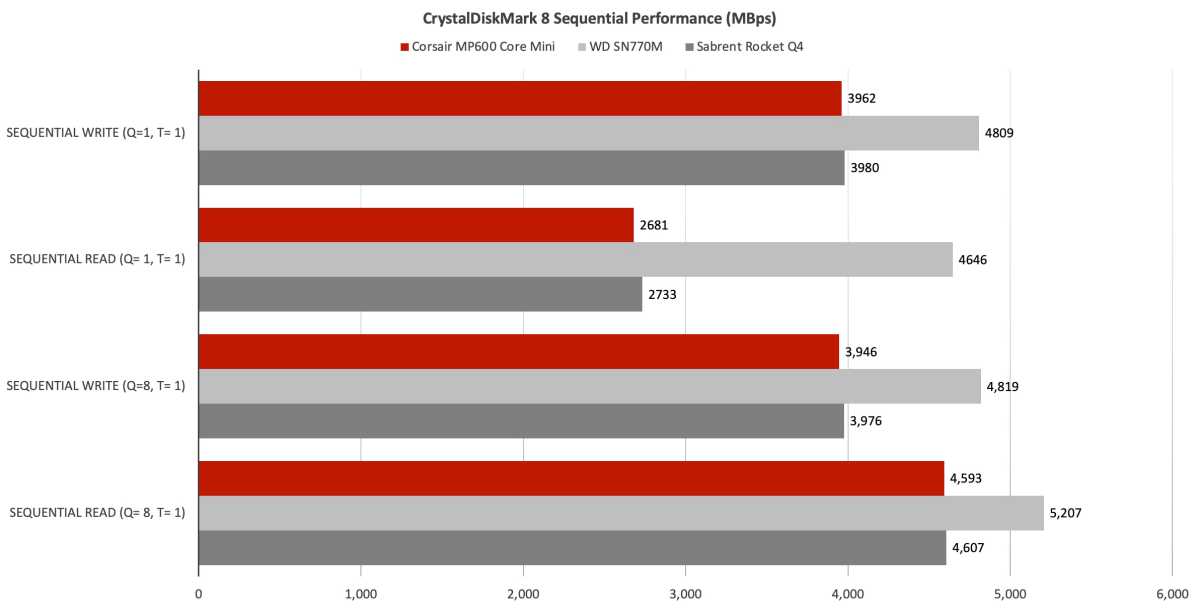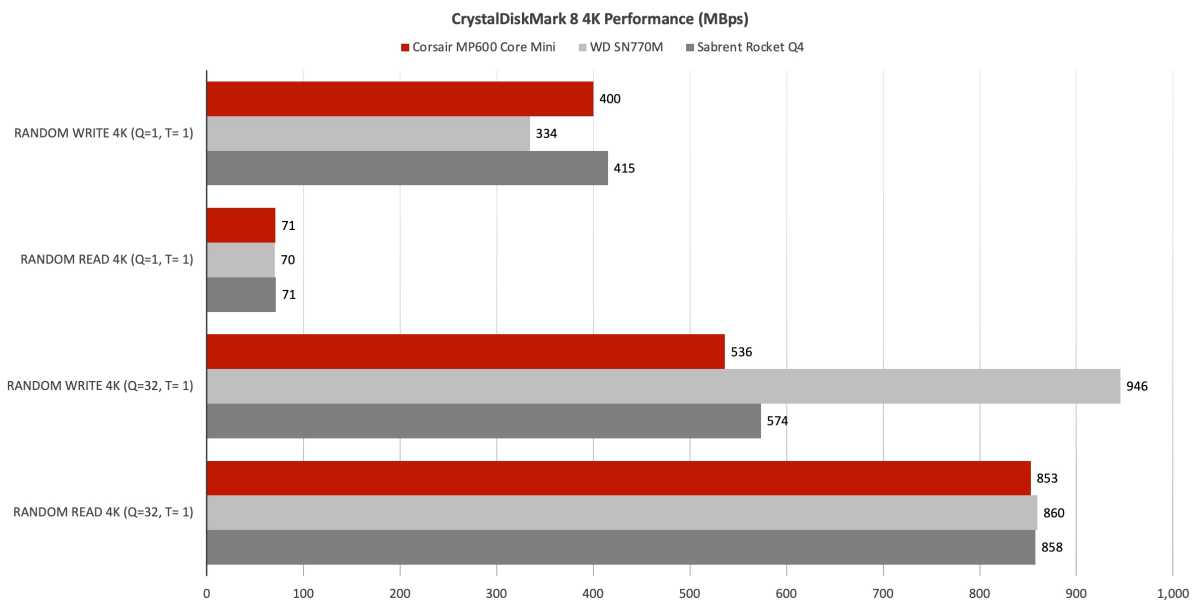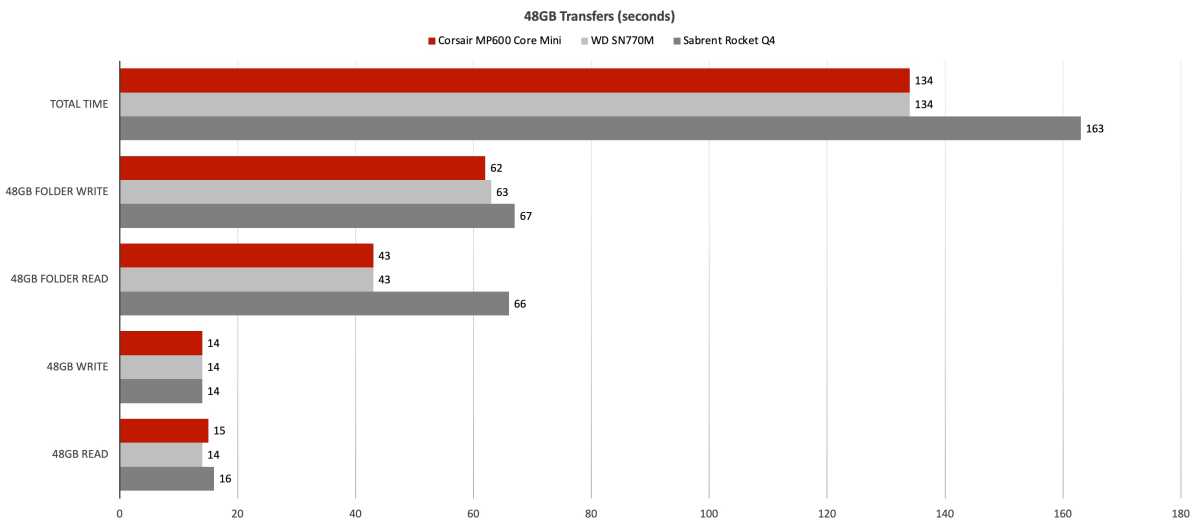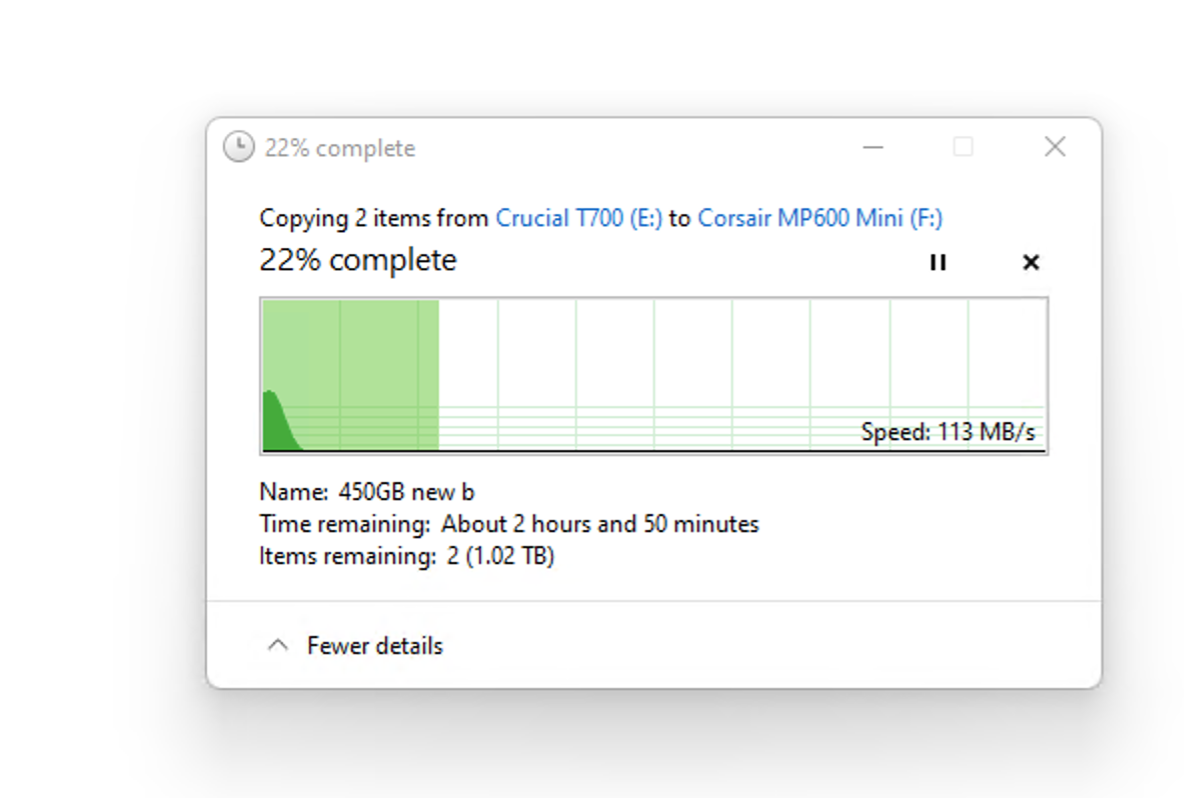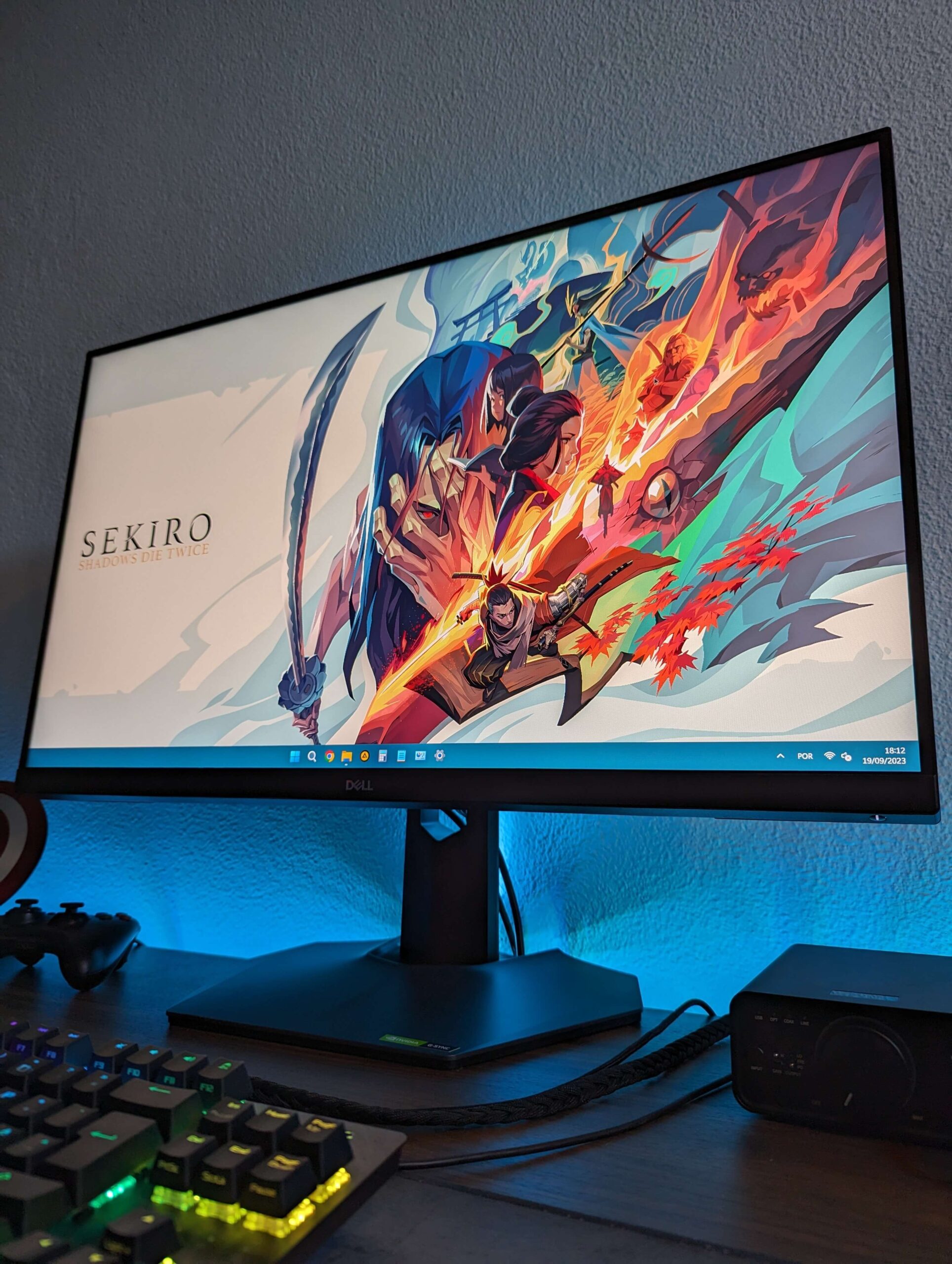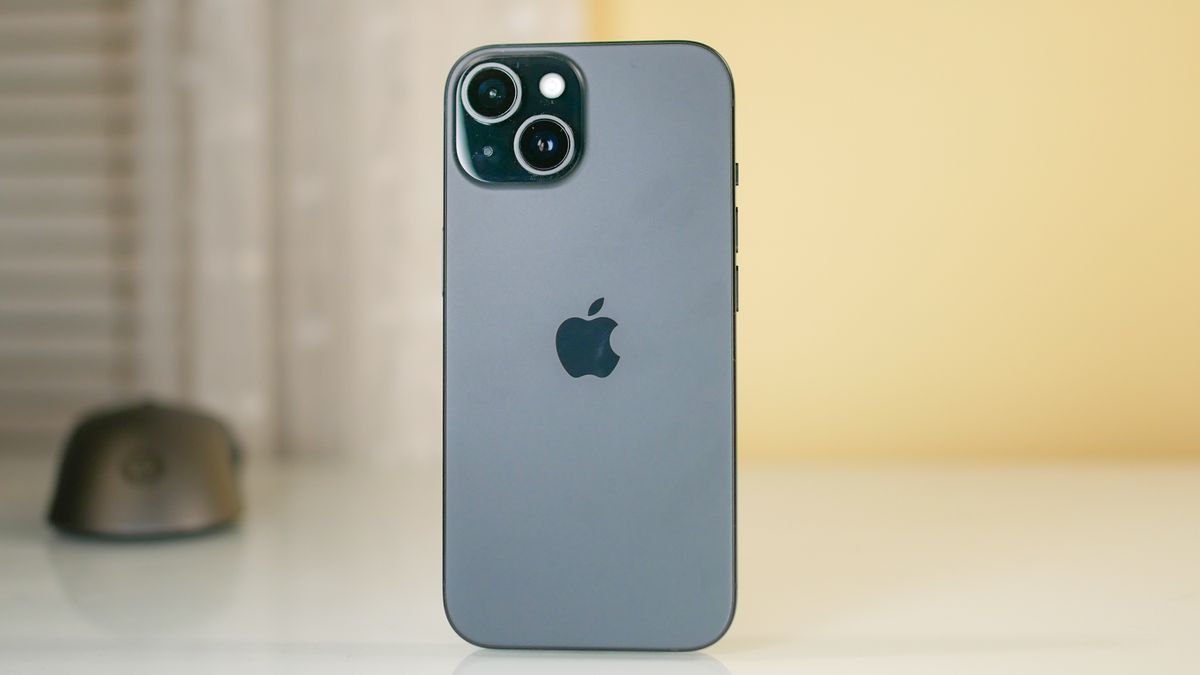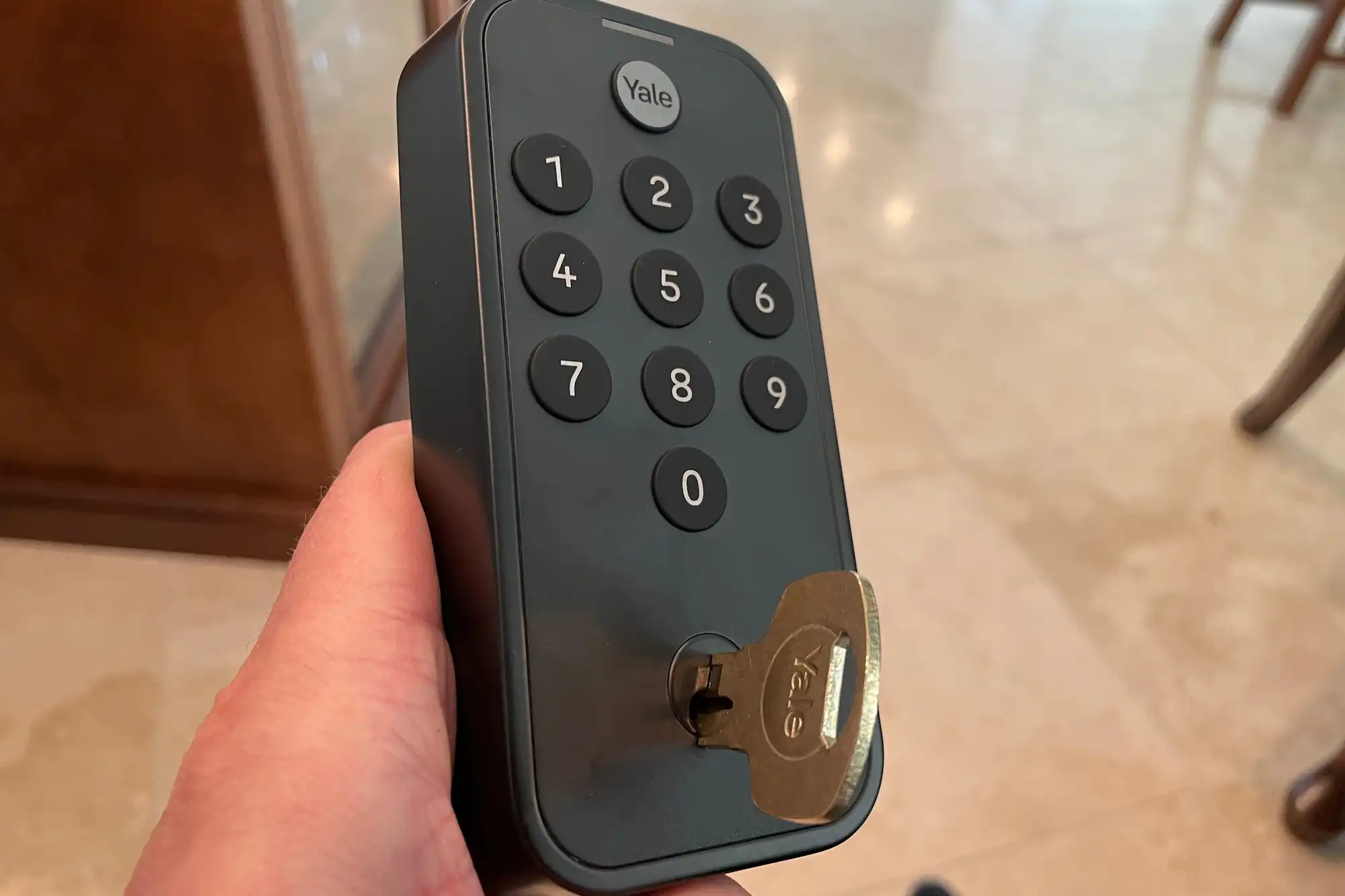This 2230 form-factor SSD easily matched the performance of other similar designs and is a good option for expanding the storage of your handheld gaming device.
Best Prices Today: Corsair MP600 Mini Core SSD
Because of the growing popularity of handheld gaming devices such as the Steam Deck, which only accept smaller 2230 form factor (22mm wide, 30mm long) SSDs, we’re seeing more of these tiny wonders from vendors these days.
Corsair’s MP600 Core Mini is one such, and it proved a very capable performer under nearly all circumstances.
What are the Corsair MP600 Core Mini’s features?
As noted, and as you might guess from the name, the MP600 Core Mini is a 2230 NVMe SSD. It’s a PCIe 4.0 x4 (four lane) drive that employs a Phison PS5021-E21 and stacked QLC (Quad-Level Cell/4-bit) NAND. Corsair didn’t get back to us on the layers, but we’re assuming there are 176 as with most QLC drives.
The MP600 Core Mini is a host memory buffer (HMB) design that eschews DRAM for primary cache, instead relying on your device’s main memory for those duties. Secondary caching is dynamic SLC (Single-Level Cell), where the QLC is written like the former, using only a single on/off voltage level.
Writing at QLC’s native 16 voltage levels requires extensive error-checking to make sure the proper level was indeed obtained and slows writes quite a bit. See the “How fast” section below.
Corsair backs the MP600 Core Mini with a five-year warranty, which is mitigated by a rather parsimonious rating of 250TBW (terabytes that may be written over the life of the drive) per terabyte of capacity.
That said, other QLC designs such as the Sabrent Rocket Q4 and the 2280 Crucial P3 carry even stingier ratings, 225TBW and 220TBW per terabyte, respectively. Longevity doesn’t seem to be a strength of this particular type of NAND.
The only 2230 SSD we’ve tested that utilizes 3-bit, TLC is the WD SN770M, which you’ll see along with the Rocket Q4 in the charts below. It carries a far more reassuring 600TBW rating.
How much does the Corsair MP600 Core Mini cost?
At the time of this writing, the 2TB MP600 Core Mini we tested was available on Amazon for $200 and the 1TB version for $95. You’re of course paying a premium for the form factor, i.e., a drive that will fit in your Steam Deck or Asus ROG Ally. Miniaturization premium or not, the competing WD SN770M was quite a bit cheaper at the time of this writing.
How fast is the Corsair MP600 Core Mini?
If you don’t throw absurd amounts of data at it, as we do in testing, the MP600 Core Mini offers more than acceptable performance. As you can see from the tests below, it’s on par for a QLC/HMB design, and very good at real-world tasks — to a point. A point I’ll describe at the end of this section.
The MP600 Core Mini matched the similarly designed Sabrent Rocket 4 in CrystalDiskMark 8’s sequential tests, but didn’t come close to the SN770M with its TLC NAND.

